This isn’t a new thought, but it is perhaps an under thought, thought. We know the the republican calendar was all kinds of F-ed up. Hence the Julian Calendar, on which see Feeney who gloriously side steps the question:

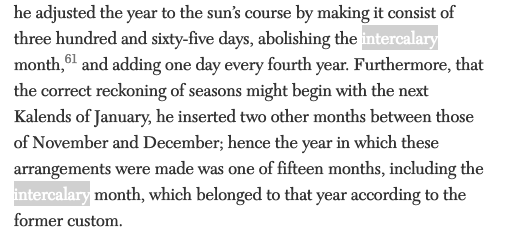
Typically intercalary months were every other year.
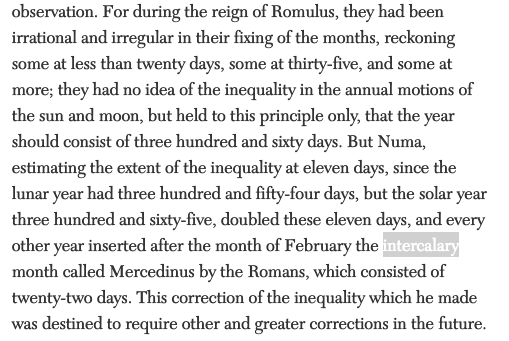


52 had been intercalary, hence the fear that 50 would be too.
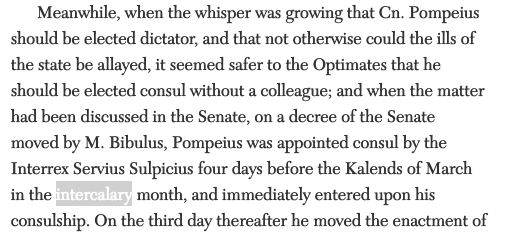
Cicero doesn’t want an intercalation in 50 because it will extend his time in the province.

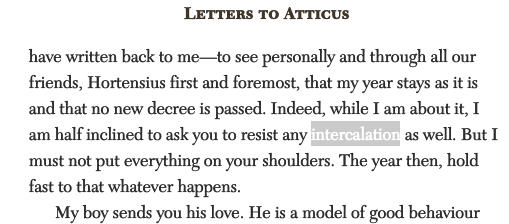

Curio seems to have been upset enough that the Pompeians didn’t put in the intercalary month that he defected to the Caesarians in early 50 BCE.

So why would someone be for or against such a month?
My hunch is that it is a big financial burden on those who have borrowed money. If you believe tessarae nummularia really are payment verification tags (not everyone does), these suggest the idea:
Rufio / Vevei // sp(ectavit) Kal(endis) Int(ercalaribus) // Cn(aeo) Po(mpeio) M(arco) Li(cinio) II
TermeDiocleziano-01, p 205 = AE 1992, 00177 (55 BCE)
Theumnest(us) / Bai / sp(ectavit) Id(ibus) Int(ercalaribus) / C(aio) Iulio M(arco) Aem(ilio)
CIL 01, 02986 (p 961) = ILLRP 01059 (46 BCE)
I’ve had a cursory look through the books on the finance/economics/banking on my bookshelves and can find nothing about intercalary payments.
We might also call in as support Plutarch’s testimony to the intercalary month being named ‘payment month’. Some believe that this is supported by an M visible on the following Fasti from Urbs Salvia (CIL 09, 05564 = InscrIt-13-01, 00035 = AE 1926, 00121 = AE 2018, +00835):
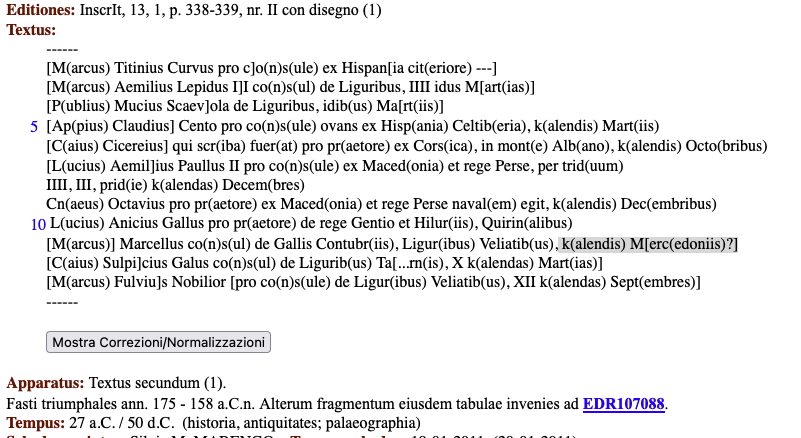

BUT there are more inscriptions that just call the month Intercalares from Roman tombus, e.g. CIL 06, 8224, 8225 8259, 8295, and 8368, all c. 2nd half of first century BCE.
Significant testimony on intercalation comes from Macrobius, Saturnalia 1.12.39 following.
Michels 1967: 168 says the following:
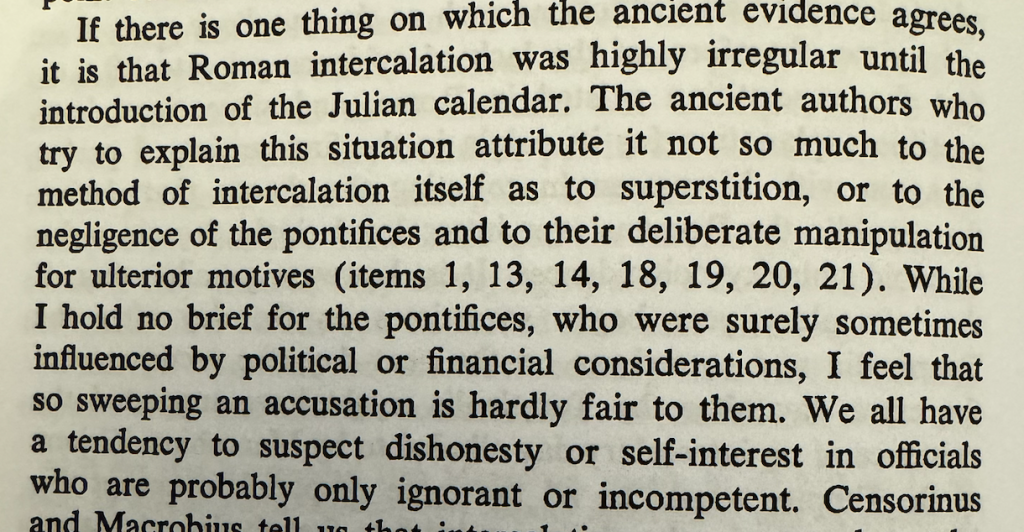
Her citation to ulterior motives are:
Cic. Leg. 2.29
Plut. Caes. 59
Suet. Caes. 40
Solinus 1.34-47
Censorinus De Die Natali 20.1-10
Amm. Marc. 26.1.7-14
Mac. Sat. 1.12.38-14.15
She gives full original texts without translation of all in the proceeding pages.
Bennett, Chris. “Evidence for the Regulation of Intercalation under the Lex Acilia.” Zeitschrift Für Papyrologie Und Epigraphik 151 (2005): 167–84. http://www.jstor.org/stable/20191985.
Brind’Amour, Pierre. Le calendrier romain: Recherches chronologiques, Collection d’études anciennes de l’Université d’Ottawa 2. Ottawa, ON: Éditions de l’Université d’Ottawa, 1983.
Anyway. I think the intercalary months likely did have financial ramifications… And I want to think more about this.
Yes, this is a long-running discussion in Jewish law, if you borrow money to repaid on the first month of the Adar, and then a second Adar is intercalated, which is the month that’s doubled for intercalation, when do you have to pay? I saw a reference to a discussion in the Rema, so 16th century, but it’s surely an ancient issue and can be traced to Roman-period sources, I’m sure…
“If someone borrowed money to repay it by Rosh Chodesh Adar,
there is a discussion among the poskim regarding which month of
Adar he must repay the loan.”
https://thelakewoodscoop.com/wp-content/uploads/2024/02/22-Adar-A23896.pdf
Thanks! So interesting!